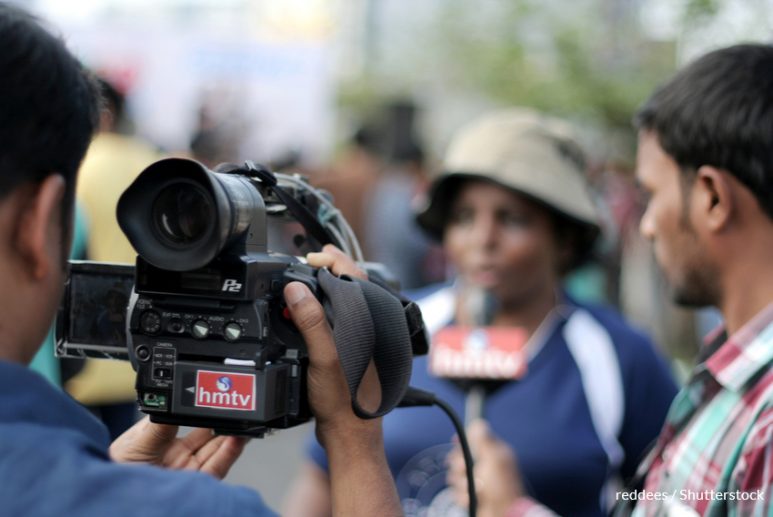By Opeyemi Ademola
Religious crises have left indelible marks on the histories of many nations across the globe, and the Kano Riots of May 1953 stand as an unforgettable day in Nigeria’s past—a day intricately connected to a major religious upheaval in the country. As we look back on this historical event, we are reminded of the media’s profound impact on public opinion and its potential to either intensify or mitigate religious conflicts.

Statista data reveals that Sub-Saharan Africa houses a rich tapestry of diverse religions, mirroring the religious plurality present across many countries on the continent. In such a context, it becomes imperative to highlight the role of the media, government, and journalists in navigating their profession while upholding ethical principles. In places like Sub-Saharan Africa, where there are different religions and lots of complex things happening, the Kano Riots show how it is important for the media to pay attention to reporting responsibly. The media has a big impact on what people think, and the Kano Riots in 1953 illustrate how media can either make problems between religions worse or help people understand each other better. Looking at what happened in Kano helps us think about how media should share information in a good way, and how it can bring different religions together and make Sub-Saharan Africa a more peaceful place.
A report by the International Association of Religion Journalists further explained the crucial role the media plays in fostering peace and understanding amidst religious differences in Africa. A poignant reminder is the case of Precious Owolabu, a 23-year-old general assignment reporter at Channels Television, Lagos. In 2019, during the Shi’ite Muslim crisis in Abuja, Precious Owolabu lost his life, exemplifying journalists’ courage and dedication while reporting from conflict zones. His death serves as a powerful testament to the relentless pursuit of truth and the desire to provide unbiased reporting, even in the face of difficult circumstances.
The historical context of the Kano Riots paints a vivid picture of the media’s impact during times of religious tension. What began as an orderly demonstration by Northern People’s Congress supporters against a proposed Action Group meeting on May 15, 1953, spiralled into small skirmishes. The situation quickly escalated into an inter-ethnic crisis on May 17. Shops in the Sabon Gari Market were looted and violent attacks ensued, only quelled by the timely intervention of the Native Authority Police and the Army, preventing further chaos. Journalists on the continent have experienced different tribal and religious crises, insurgence, political crises, economic crises, and vandalism, among others. To a certain degree, these circumstances have prevented journalism from achieving its potential as envisaged under the social responsibility theory of the press.
By examining these historical events and juxtaposing them with contemporary challenges, it is important to bring to light the evolution of media coverage’s impact on religious peace in Africa. It becomes evident that the media has the power to shape public perception and influence attitudes, making it a critical instrument in fostering an atmosphere of tolerance, understanding, and mutual respect among diverse religious communities. As the story unfolds and the narratives of African journalists emerge, it becomes clear that their role extends beyond merely reporting events—it encompasses the responsibility of bridging divides and promoting dialogue, thus playing a pivotal role in the quest for religious harmony and peace on the continent.
In 2001, Plateau state was hit by communal violence which resulted in the tragic death of at least 1,000 people. The violence persisted, with clashes between Muslim and Christian youth in Jos in 2008 claiming the lives of at least 700 people. The year 2010 stands out as particularly devastating, with a loss of over 1,000 lives, marking one of the deadliest periods on record.
Over time, various efforts have been made to promote peaceful initiatives in Nigeria, such as the radio porgramme Nigeria Voice of Peace by Search for Common Ground. The program, which reached out to traditional communities, talked about peace and educated the public about the danger of religious crises. It played a big role in reducing religious crises in Jos and some parts of Nigeria through non-stop and consistent campaigns using news reports, infographics, and multi-media.
Maryam Ahmed, a media and communication strategist working in the development sector, said “Peaceful programs in each state signifies its ability to promote peace, as each radio station caters to a distinct and diverse audience. By broadcasting the program simultaneously on these varied platforms, it served as a potent channel to advocate for peace in the state”. Ahmed highlighted that numerous initiatives further supported the cause by collaborating with journalists, providing them with training, funding, and grants to uphold journalism ethics and work towards peace promotion. Ope Adetayo, a journalist, said that it is important for journalists to pay attention to the use of words and their approach while reporting religious news without being biased. It is also important to note that culture and religion are linked in most parts of Africa which he often tries to explain while writing a news report.
It is evident that the quest for religious peace in Africa requires a collective effort from all facets of society, with journalism standing tall as a catalyst for positive change. A strategic approach will undoubtedly inspire not only media professionals but also the public at large to acknowledge the influence of media coverage on religious peace and to strive for a future where understanding and harmony prevail.

